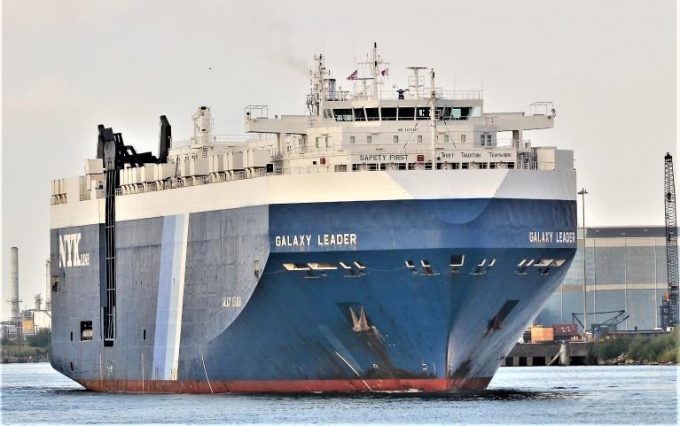Heavy speculation in China’s container shipping futures as Gaza War drags on
Trading of China’s container shipping futures (CoFIF) rallied last week, as Middle East peace talks ...

Shipping firms with vessels transiting the Suez Canal, and its Red Sea approaches, were warned about the heightened risk of hijacking shortly before Iran-backed Houthi rebels captured a car-carrier yesterday.
The 2002-built Galaxy Leader, enroute to India from Turkey, is operated by Japanese shipping line NYK and registered in the Bahamas. However, according to the vesselsvalue.com database, it is owned by Isle of Man-based Ray Car Carriers, which is 50% owned by Israeli businessman Abraham “Rami” Ungar.
The 4,500 ceu [car ...
Outlook for container shipping 'more uncertain now than at the onset of Covid'
Transpac container service closures mount
Shippers warned: don't under-value US exports to avoid tariffs – 'CBP will catch you'
Cancelled voyages take the sting out of spot rate declines this week
New Houthi warning to shipping as rebel group targets specific companies
Blanked sailings in response to falling demand 'just a stop-gap solution'
K+N CEO unveils impact of US import tariffs on China-origin goods
CMA CGM to reflag box ship as the French carrier eyes growing Indian market
UK pauses tariffs on 'everyday' items
Boeing looks to resell up to 50 aircraft rejected by Chinese buyers
'Strong start' to 2025, despite market uncertainty, says Kuehne + Nagel
More pressure on transpacific rates as carriers bet on a China-US trade deal
US Customs chaos means 'more downside risk than upside potential' for air cargo
Taiwan ministries act to mitigate effect of trade war on agriculture exports
Wan Hai joins box shipping 'arms race', but avoids Chinese yards for newbuilds

Comment on this article